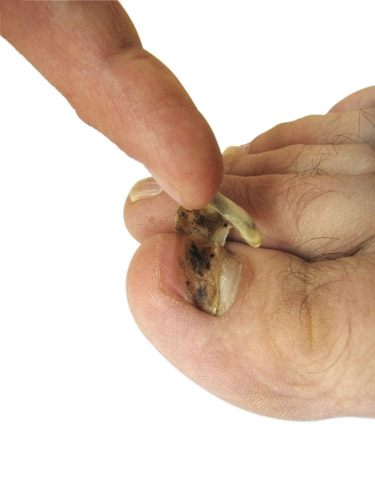What Are The Dangers Of Nail Fungus?
Fungus can grow in spots on your fingernails and toenails, and if not treated, the infection can spread to the rest of the nail, your other finger nails and toe nails, and to the skin.
In addition to causing physical problems, a nail that is infected with fungus can cause mental distress as well, particularly if the problem occurs in fingernails because they are more visible than toenails. You can hide an infected toenail with socks and shoes, but there isn’t much you can do to hide an infected fingernail from the rest of the world’s eyes. The best thing to do for treating toenail fungus at home is to use a nail fungus cream like Keriderm.
Onychomycosis
Although there are several different types of fungus that can infect nails, the infection itself is referred to as Onychomycosis. Adults are far more likely to get nail fungus than are children; elderly people suffer the most cases of nail fungus, which is likely due to their having a worn down immune system. Diabetes is also a contributing factor to nail fungus infection. There are several types of nail fungus infections that can be considered dangerous conditions.
DLSO Infection
There are several subcategories of Onychomycosis, and the category is determined by how the infection began and how far the infection has progressed.
DLSO is the category of infection that affects most people. In a DLSO infection, the fungus spreads from a person’s skin to under the nail where the finger or toe nail attaches to the nail bed. This causes the nail to thicken and become opaque. If untreated, the entire nail bed will become infected, causing the nail to discolor; the color ranges from yellow to brown. The edges of the nail become irregular and it can look and feel bumpy or ridged.
In most cases, a DLSO infection does not cause pain; pain can occur if the nail thickens to the extent that wearing shoes causes it to press against the top or side of the shoe. In addition, some people experience a tingling sensation of the skin of an infected toe or finger nail. A DLSO nail fungus infection can spread to other nails, making more than one of your fingers or toes unsightly.
WSO Infection
A more rare type of nail fungus infection, WSO, occurs when fungus attacks the nail plate, which also causes infection of the nail bed.
WSO causes white patches or specks on the surface of the nail. These patches and specks cause a roughening of the nail, and it can crumble where the patches are. The crumbling of the nail exposes the bed to injury and infection, and any number of problems could occur as a result of having the nail bed exposed.
Candidal Infection
An infection caused by Candida yeast, is categorized separately.
A nail infection caused by Candida causes it to separate in layers, eventually separating completely from the bed. If not treated, this type of fungal nail infection can spread to the skin beyond the cuticle, causing a disease known as chronic mucocutaneous. This disease can cause permanent disfiguration of nails as well as finger tips and the tips of the toes.
Know the Dangers of Toenail Fungus
Fungal infections of the toe or finger nail, or Onychomycosis, is most commonly seen in the toenail. Records indicate an estimated 50 million Americans suffer from Oncychomycosis – Toenail Fungus.

Maintaining proper hygiene and using appropriate skin products helps avoid toenail fungal infection. Dermatologists are optimistic that a cure for fungal infection is on the horizon. Yet millions still suffer
Though toenail fungus is most often found among diabetics, everyone is susceptible - especially those who have lifestyles or jobs where their feet get wet, dirty, and where periodic cleansing is difficult or impossible.
Onychomycosis (toenail fungus) generally appears at the distal tip of the nail and progresses into the nail over a period of months and years. The nail thickens as the fungi growth continues to destroy the affected part of the nail. As the fungus develops, it grows and causes swelling. Nails turn brittle and chalky and often change color - yellow, violet, white or even green - to black as the nail, tissue, muscle, and nerves begin to die.
More than 50% of those aged 50 or older suffer from toenail fungus. Fungi growth is primarily attributed to lack of cleaning, constant exposure to heat and moisture, or repeated introduction to fungal environments - dirty socks, infected shoes, dirt and mud, bacteria-rich water.
Toenail fungus often accompanies injury. Since the foot is especially susceptible to infection, injury (primary open wounds) to the toes and nails invites fungus growth.
Recommended Treatments and Techniques
Keriderm Rx Toenail Fungus Cream
Topical medications such as Keriderm Rx, a Toenail and Fingernail Therapy Cream from HealthyHairPlus.com, are specially formulated with transdermal Emu Oil, Grapeseed Oil and Tolnaftate to penetrate deeply in to the nail and skin to eliminate fungus.
Additionally, products that contain super-moisturizing agents are helpful. Healing skin requires moisturization for skin rejuvenation.
|